Almost unthinkable and now it’s a reality. by Eli Virkina
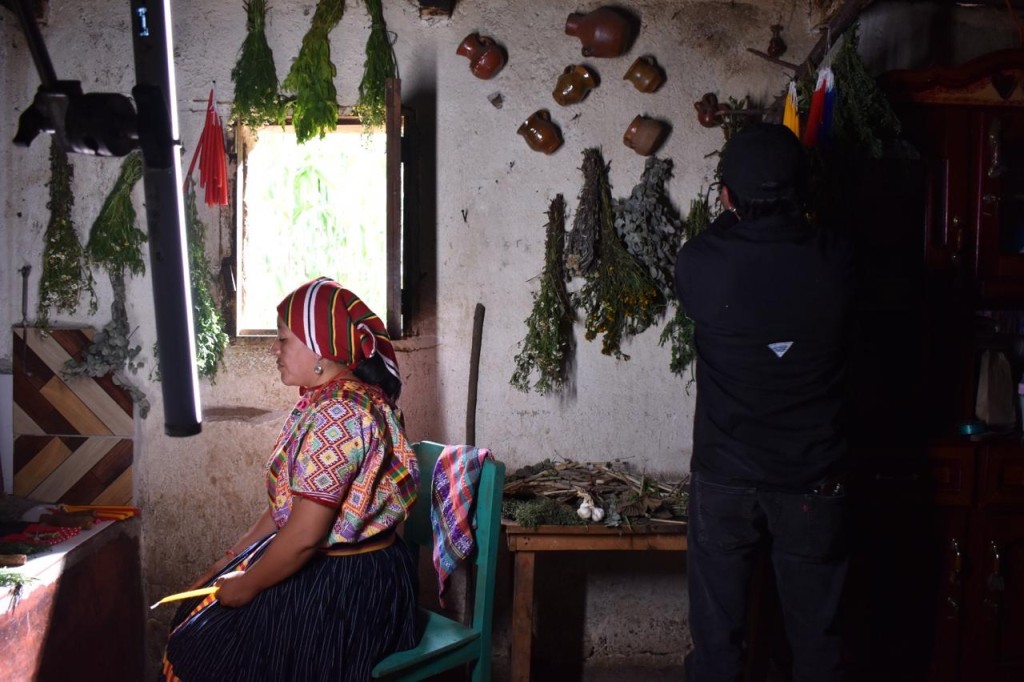
Image: Tirza Ixmucané
“Kawsawnguichu” are you alive? an elder greets, “kawsawnimi” I am alive, I reply. “kawsawnchimi” we are alive. This way of greeting in my Kichwa language is vastly disappearing, yet the paths our ancestors, grandparents, parents, aunts, and uncles have left for us are more clear than ever. Sometime long ago, an ancestor planted a seed, told a story, or shared a dream. Through these acts of love, they gave us the necessary tools to survive so yes we are alive and we are thriving. This is no coincidence or luck, we are our ancestors’ dreams and the seeds they once planted have fruited and multiplied.
As a niece in the world of filmmaking, I honor those who have set a path and kept the door open–for us, the next generation of storytellers and firekeepers. The camera, once a silent observer capturing only the world through the lens of others, has now become a tool in the hands of Indigenous people. This is not about controlling or commanding the lens, but rather nurturing, caretaking, and honoring the responsibility we have to our people and territories. We are no longer just the subjects of the story; we are the ones telling it. Behind the camera, we shape the narrative, guiding the world to see our truths from our perspective. This shift is not just technical—it’s a reclamation of agency, a reclaiming of time and space. The camera now reflects our strength and resilience, and the richness of our hearts as we tell our own stories, not as outsiders, but as the storytellers we have always been.
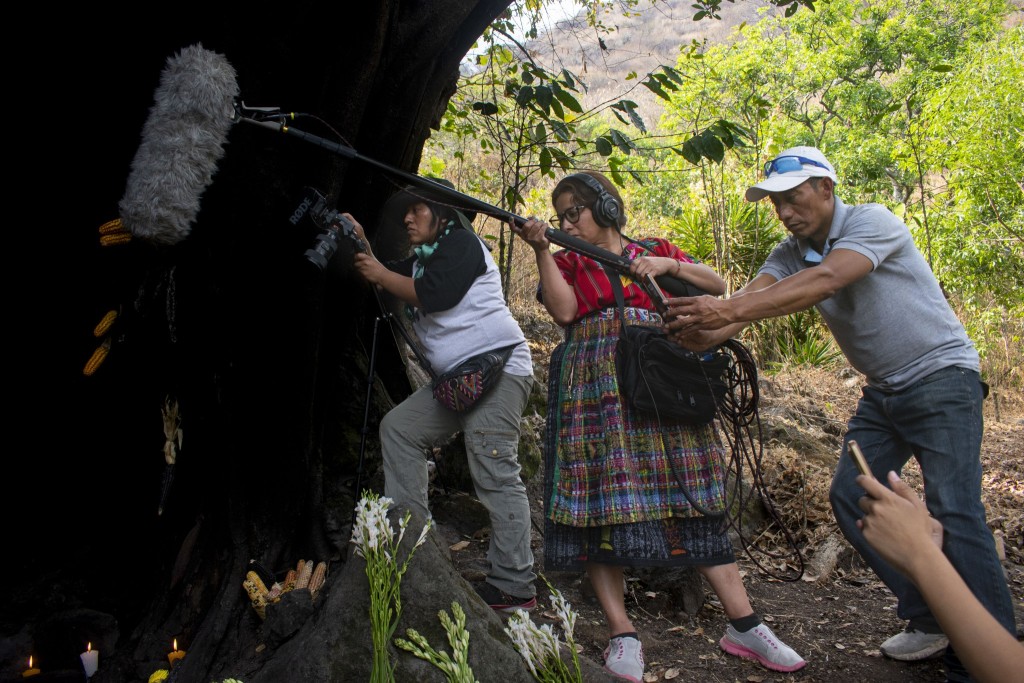
Image: Tirza Ixmucané
Time of Return, Time of Alliances
During a conversation with David Hernández-Palmar, our “filmmaker uncle”, more formerly known as the Director of Partnerships and Engagement for If Not Us Then Who?, I was reminded by “Pachakuti”. He told me that in the Aymara language, the word Pachakuti means “Time of Return”. Bittersweetness filled my heart, as I began to remember and I pondered on this for some time.
The more I listened the message was clear: Time of Return is not about looking at the past with nostalgia, rather about learning to view the present in a different way. From the Andean mountains, the Caribbean basin,to the Amazon, and all the biomes of Abya Yala; the stones of yesterday have spoken. They tell us that, despite the injustices of the present, a better future is possible, a future that was dreamed, sown, and narrated thousands of years ago.
Aymara poet tells us:
Pachanakana saratap kutirayiri
You untangle the passage of time
aski nayra sarawinaka tumpthapisina
rescuing the beneficial traditions
wasururu qalanakar arsuyasa.
making the stones of yesterday speak
Indigenous Cinema Today
Today, we celebrate a decade of Indigenous cinema and the narratives of the peoples. Ten years weaving images, words, and resistances. Ten years in which we have made visible what many tried to erase, showing that our stories not only exist, but are essential for the world. But this celebration is not just a milestone; it is a starting point. It is the Pachakuti of our alliances, the moment to strengthen our connections as peoples, to walk together in defense of life, memory, and dignity.
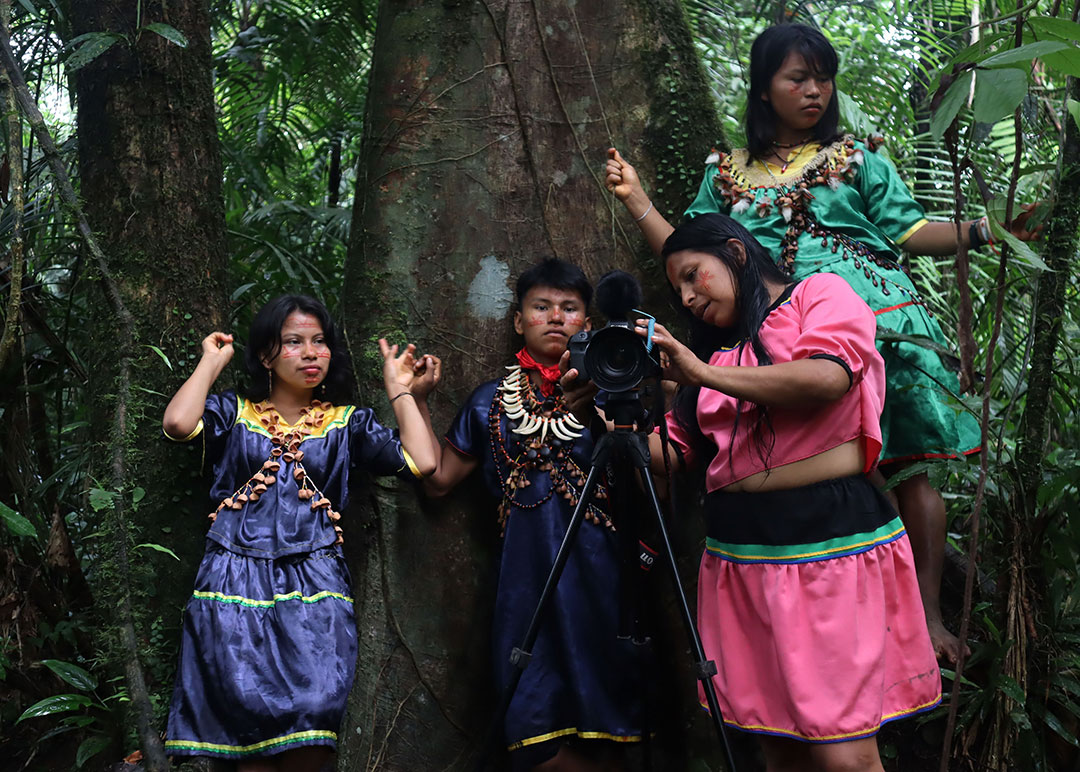
It is not quinoa against corn, nor corn against rice, nor rice against baobab. It is not tundra against páramo, nor plains against savannas.
It is not one culture against another.
It is the union of all our voices, all our struggles, and all our dreams.
We are all the peoples of the world, ready for a new decade of narratives that heal, resist, and transform.
Because Indigenous cinema is not just a tool, it is a territory. A territory where our stories bloom and where the Time of Return reminds us that the future is already in motion.
Indigenous Cinema Alliance – what is it?
Like fish in a pod, gazelles in a herd, or macaws in a flock–we understand that we are better together. We are relational beings that not only value the communities we are from but also recognize that we are parts of much larger ecosystems. From water bodies, through the earth, and to sky we form alliances.
The Indigenous Cinema Alliance (ICA) is a global network dedicated to elevating Indigenous cinema on the international stage. Founded in 2015 as the NATIVe Indigenous Cinema Stand, ICA serves as a market-access platform for Indigenous filmmakers, connecting their stories with industry professionals worldwide. As an official partner of the European Film Market (EFM), ICA is managed by imagineNATIVE and collaborates with leading Indigenous film organizations, including ISFI, 4th World Media Lab, Film.GL, Pacific Islanders in Communications, If Not Us Then Who?, MULLU TV, PISA, and Winda Film Festival.

This year, If Not Us Then Who?, along with Mullu TV and PISA, became new partners of the Indigenous Cinema Alliance. “Joining ICA allows us to strengthen our voices and connect Indigenous filmmakers internationally”, stated David Hernández-Palmar, Director of Partnerships and Engagement for If Not Us Then Who?
Since 2018, the ICA Fellows Programme has been a key component of the stand, bringing a roster of international Indigenous producers to the market. This professional development opportunity allows Indigenous producers to attend the EFM with a market-ready feature film project. The program is a unique fellowship that promotes Indigenous feature film projects through the ICA Stand and offers curated activities to maximize their EFM experience. The ICA Fellows Programme assembles a select group of Indigenous producers from the Stand Partners’ regions, providing them with specialized training, meetings, networking events, panels, and social activities to enhance their EFM and Berlinale experience. In 2024, ICA updated its stand strategy to include serving as a world sales agent, focusing on promoting and selling Indigenous films.
Films & Projects Selected by If Not Us The Who?
Featured at European Film Market/ Indigenous Cinema Alliance 2025

Meet the Partners
The Indigenous Cinema Alliance is a powerful collective of organizations committed to uplifting Indigenous voices and stories that are too often overlooked. Get to know the alliance and its partners:
- 4th World Media Lab – An artist fellowship that uplifts Indigenous voices through industry immersion and project development.
- Film.GL – A private association supporting professionals in Greenland’s film industry.
- International Sámi Film Institute – The only institute dedicated to developing, producing, and distributing Sámi films in the Sámi language.
- imagineNATIVE – The world’s largest presenter of Indigenous screen content, based in Toronto, Canada.
- Pacific Islanders in Communications – A US-based organization amplifying Native Hawaiian and Pacific Islander voices through storytelling.
- Winda Film Festival – Celebrating both emerging and established Indigenous filmmakers from Australia and around the globe.
- If Not Us Then Who? – A global collective of impact storytellers committed to diversifying climate voices.
- MULLU – A digital channel amplifying Indigenous, Afro-descendant, and frontline voices in anti-colonial and social justice movements.
- PISA – A professional association supporting Pacific Islands heritage individuals working in New Zealand’s screen sector.
Explore these initiatives and organizations to connect with powerful Indigenous storytelling and support the growth of diverse voices in cinema. Together, these partners are not just shaping the future of cinema—they are fighting for Indigenous rights, for the preservation of cultures, and for the protection of the Earth that sustains us all.

Reclaiming the Frame: Indigenous Cinema Takes Stage at Berlinale

Image: Alexander Klebe
For Indigenous Peoples, being part of the prestigious Berlinale Film Festival represents a powerful recognition of their stories, culture, and resilience on a global stage. It is a moment of reclaiming narrative power, allowing them to share their voices and experiences directly with the world, rather than through the lens of outside perspectives. This inclusion highlights the importance of Indigenous cinema in the broader context of world cinema, and serves as a platform for addressing the complexities of Indigenous identity, history, and struggles. It affirms that Indigenous communities are not merely subjects of storytelling, but active creators.
What does the opportunity to weave participation opportunities at Berlinale and other spaces for emerging filmmakers from our communities mean for INUTW and for you?
“the opportunity to create spaces for participation at Berlinale and other renowned film festivals represents a crucial step in consolidating an international network of support and visibility for emerging Indigenous filmmakers from the Global South. This effort aims not only to ensure the representation and circulation of our narratives within the global film industry but also to foster access to resources, funding, and co-production opportunities that can strengthen the audiovisual sovereignty of our communities.” – David Hernández Palmar
Image: Alexander Klebe
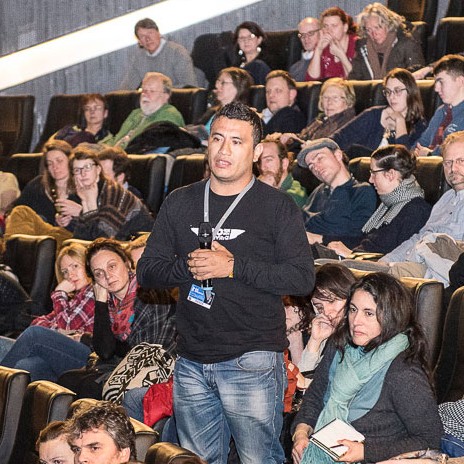
This year, we are proud to be formal partners of the Indigenous Cinema Academy (ICA), re-established in 2024 for the European Film Market (EFM). This partnership reflects our ongoing commitment to training, promoting, and building networks for Indigenous filmmakers in key industry spaces. For INUTW, it’s a step toward creating sustainable platforms that share our stories with self-determination, free from outside influences. By strengthening connections with international festivals and markets, we ensure that Indigenous productions are not only showcased but also recognized for their quality, impact, and commercial potential.
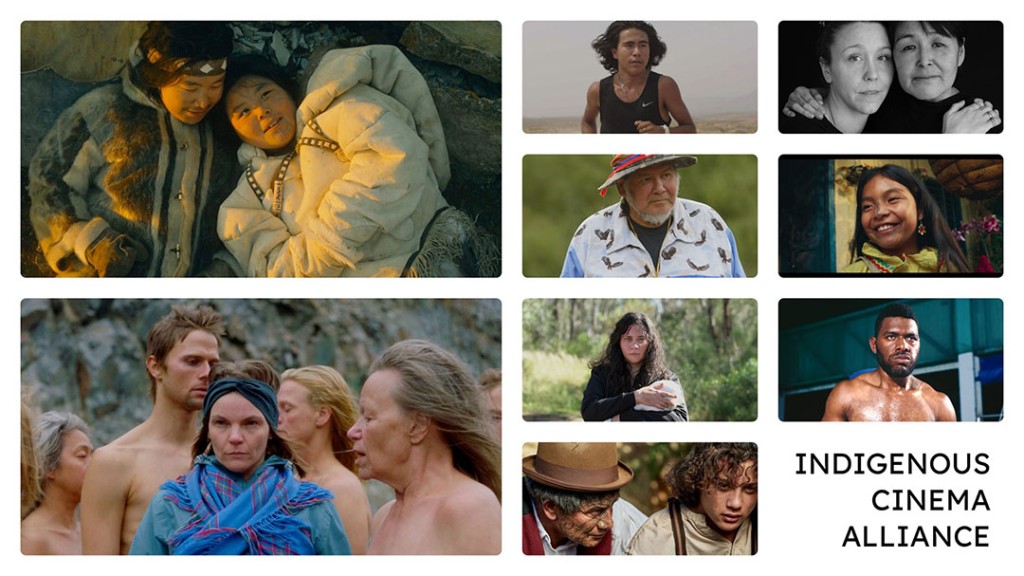
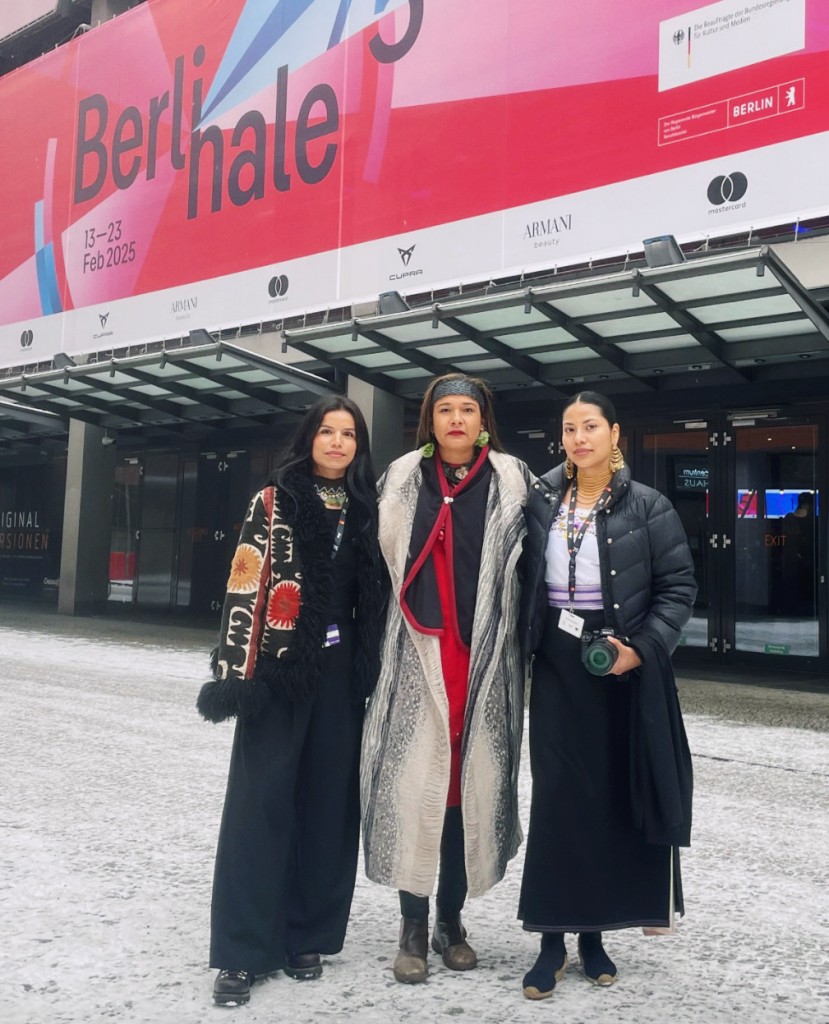
“we are on the path to the boom of
Indigenous Cinema”
Image: Nina Gualinga, Shirley Krenak, Frida Muenala at Berlinale 2025 | By Jimmy Piaguaje
“I firmly believe that we are on the path to the boom of Indigenous cinema, not because it hasn’t been created before, but because now we are coming together. This gathering we are experiencing today, where we are recognizing each other, is a pivotal moment for Indigenous filmmakers around the world. In recent years, we have invested in alliances among ourselves, with the goal of decolonizing the processes of co-production, from written agreements to production methods that are consistent with the cosmologies of our peoples, and the way we distribute our work.” Frida Muenala, Kichwa Zapoteca filmmaker, MulluTV.
The Next Decade of Indigenous Cinema
“opening new paths is a form of cultural resistance, where cinema becomes a vehicle to reaffirm our identity, memory, and rights on the global stage” – David Hernández Palmar
Indigenous Cinema has undergone incredible transformation in a short time. Over the next decade, we will continue to witness a shift in how Indigenous stories are told, heard, and celebrated. Indigenous filmmakers are breaking barriers, not only in terms of representation but also in reshaping the way the global film industry operates.
Image: Buscando las Marcas del Asho’ojushi I David Hernandez Palmar & Marbel Vanegas
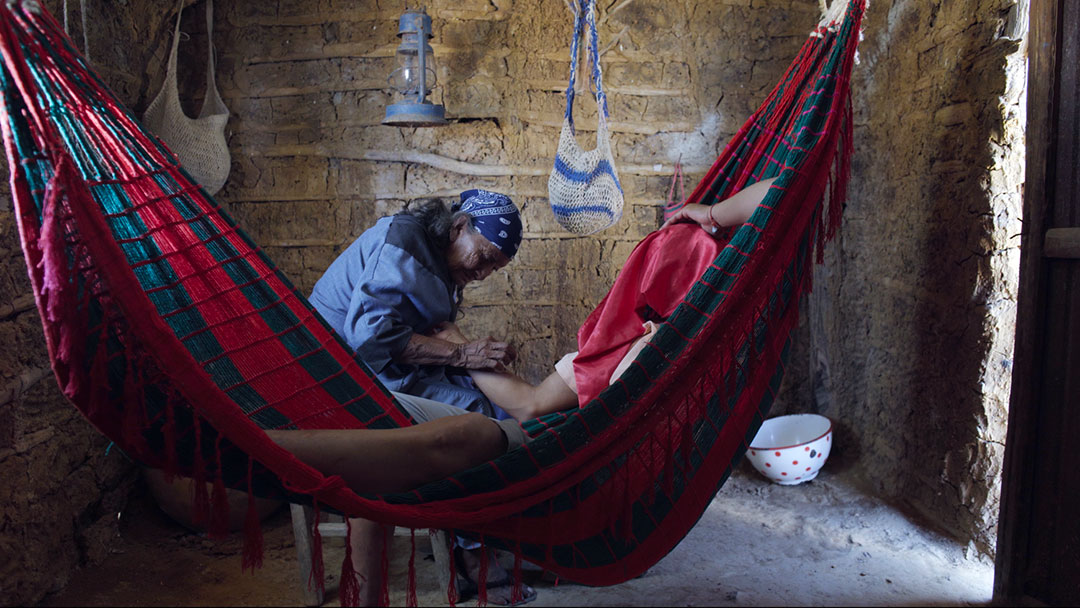
Ten years ago, this was almost unthinkable, and now it’s a reality.
The next decade holds immense potential for Indigenous voices to lead the charge in storytelling, creating opportunities for cultural preservation, social justice, and environmental advocacy. We will see an expansion of platforms that amplify Indigenous filmmakers, making these stories more accessible to wider audiences and ensuring they are told with authenticity, agency, and pride. Through continued collaboration, empowerment, and innovation, Indigenous cinema will continue to thrive, shifting the industry’s landscape and creating new pathways for future generations of storytellers. The unthinkable is now possible, and the future is full of promise. This is our moment to take our place in the world, to show that we are here, that we have always been here, and we will continue to shape the future of cinema, just like we’ve always shaped the future of our people. This isn’t just about making films—it’s about owning our stories, and about fighting for a future where we don’t just exist, but thrive.
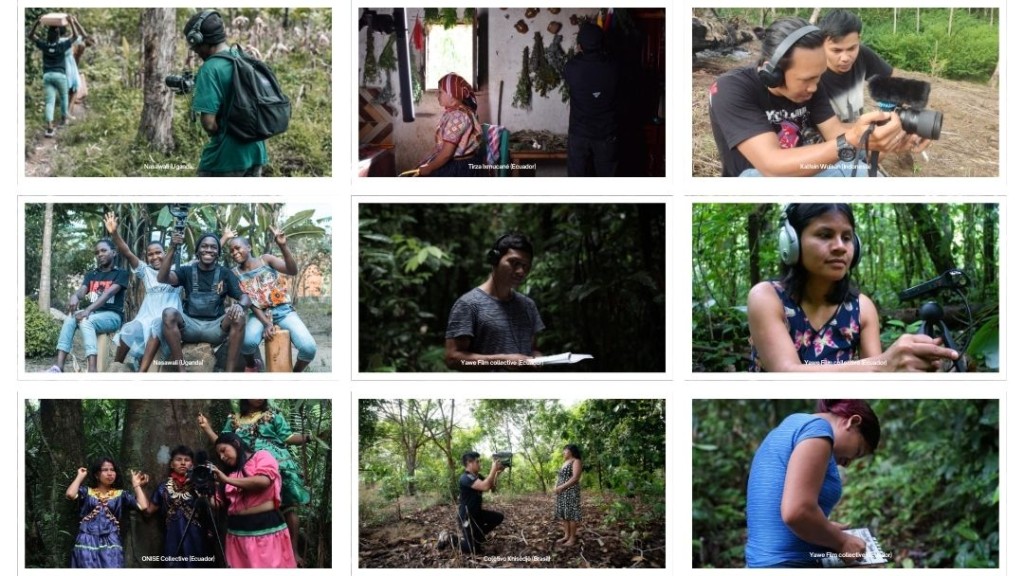
Image: Featuring Emerging Filmmakers from the INUTW Training Program
From creating industry alliances rooted in reciprocity to designing a new industry framework that prioritizes Indigenous values and vision, the next decade will be a transformative period for Indigenous filmmakers and creatives worldwide. The following focus areas are essential to making that transformation a reality:
Sustainability of Funds for the Global South
Ensure long-term financial support for Indigenous filmmakers in the Global South to sustain ongoing production and growth.
Strengthening Recognition Among Indigenous Creatives
Increase visibility and create stronger networks for Indigenous filmmakers, photographers, and creatives.
Impact Campaigns: Supporting Beyond Our Films
Impact campaigns should support Indigenous issues both within and outside our films, driving social change and advocacy.
Reciprocity: Equity and Reciprocity Within Our Alliances
Adopt mutual respect and fairness in all partnerships, based on equity while honoring Indigenous values of reciprocity.
Designing the Industry Through an Indigenous Lens
Empower Indigenous creatives to reshape the film industry with cultural frameworks that prioritize autonomy and vision.

Resources- How can others get involved
SUPPORT INDIGENOUS CINEMA
We invite you to support Indigenous cinema by exploring our If Not Us Then Who? Playlist of Films by Indigenous filmmakers as well as these platforms:
- MiradaNativa – Showcasing powerful films & celebrating independent films. Free and Paperview.
- RetinaLatina – Featuring Latin American Indigenous cinema.
- Isuma.TV – The first platform led by Indigenous filmmakers, Isuma.TV is unique in allowing filmmakers to upload films in their native languages and use the platform to drive action and amplify their voices.
- International Sámi Film Institute – provides Sámi filmmakers with skills and economic opportunities to develop, produce, and distribute films in Sámi languages.
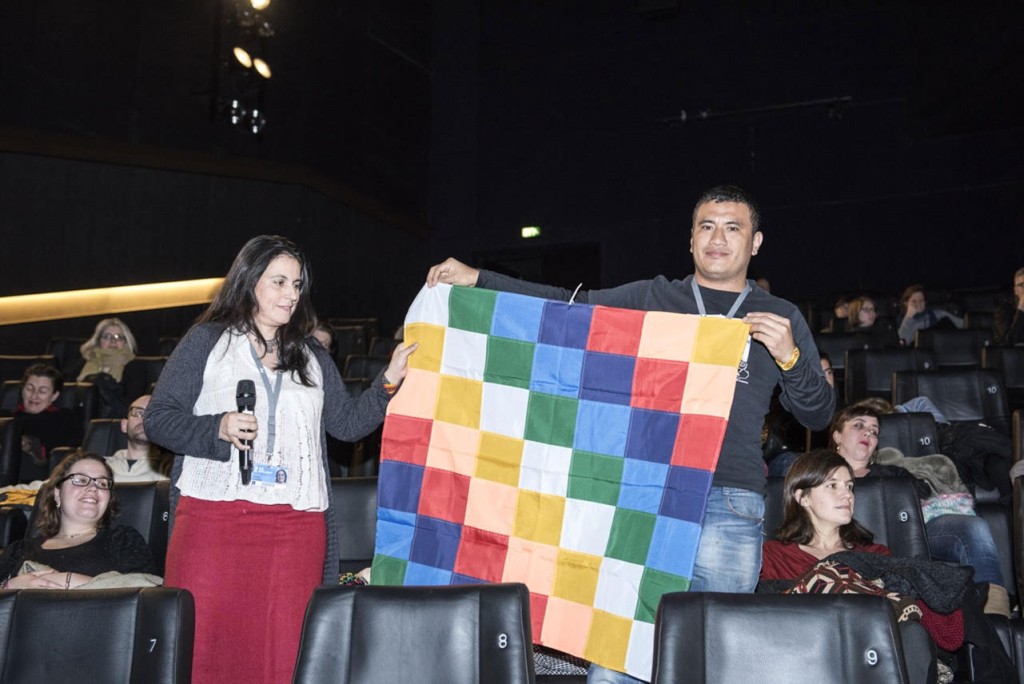
Image: Alexander Klebe